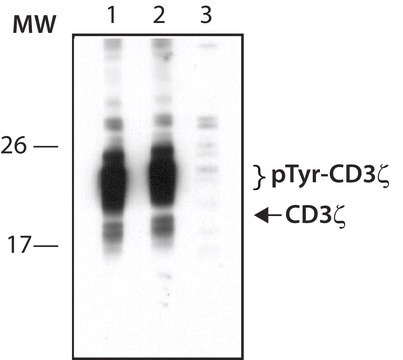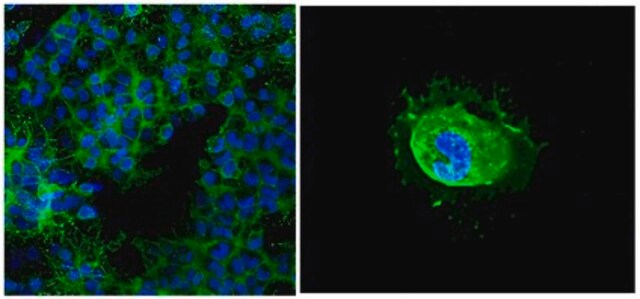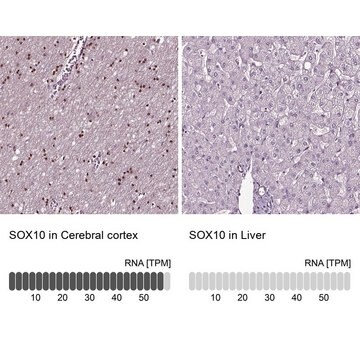MABF2812
Anti-CD137 Antibody, clone LOB12.0
Synonym(e):
4-1BB ligand receptor, T-cell antigen 4-1BB, Tumor necrosis factor receptor superfamily member 9
About This Item
Empfohlene Produkte
Biologische Quelle
rat
Qualitätsniveau
Antikörperform
purified antibody
Antikörper-Produkttyp
primary antibodies
Klon
LOB12.0, monoclonal
Mol-Gew.
calculated mol wt 27.6 kDa
observed mol wt ~N/A kDa
Aufgereinigt durch
using protein G
Speziesreaktivität
mouse
Verpackung
antibody small pack of 100
Methode(n)
competitive inhibition ELISA: suitable
flow cytometry: suitable
inhibition assay: suitable
surface plasmon resonance (SPR): suitable
Isotyp
IgG2aκ
Epitopsequenz
Unknown
Protein-ID-Hinterlegungsnummer
UniProt-Hinterlegungsnummer
Lagertemp.
-10 to -25°C
Angaben zum Gen
mouse ... Tnfrsf9(21942)
Spezifität
Immunogen
Anwendung
Isotype testing: Identity confirmation by Isotyping test.
Isotyping Analysis: The identity of this monoclonal antibody is confirmed by isotyping test to be rat IgG2a .
Tested Applications
Surface plasmon resonance: A representative lot detected CD137 in Surface plasmon resonance applications (Buchan, S.L., et al. (2018). Immunity. 49(5):958-970.e.7).
Flow Cytometry Analysis: 10 µg from a representative lot detected CD137 in Jurkat cells expressing mouse CD137.
Agonist Activity: A representative lot of this antibody co-stimulated CD8+ T cells and potentiated anti-tumor immunity in mice.(Taraban, V.Y., et al. (2002). Eur J Immunol. 32(12); 3617-3627 ).
Competition Assay: A representative lot of this antibody competed for binding to 4-1BB on effector T cells. (Buchan, S.L., et al. (2018). Immunity. 49(5):958-970.e.7).
Flow Cytometry Analysis: A representative lot detected CD137 in Flow Cytometry applications (Buchan, S.L., et al. (2018). Immunity. 49(5):958-970.e.7).
Note: Actual optimal working dilutions must be determined by end user as specimens, and experimental conditions may vary with the end user.
Zielbeschreibung
Physikalische Form
Rekonstituierung
Lagerung und Haltbarkeit
Sonstige Hinweise
Haftungsausschluss
Sie haben nicht das passende Produkt gefunden?
Probieren Sie unser Produkt-Auswahlhilfe. aus.
Lagerklassenschlüssel
12 - Non Combustible Liquids
WGK
WGK 2
Flammpunkt (°F)
Not applicable
Flammpunkt (°C)
Not applicable
Analysenzertifikate (COA)
Suchen Sie nach Analysenzertifikate (COA), indem Sie die Lot-/Chargennummer des Produkts eingeben. Lot- und Chargennummern sind auf dem Produktetikett hinter den Wörtern ‘Lot’ oder ‘Batch’ (Lot oder Charge) zu finden.
Besitzen Sie dieses Produkt bereits?
In der Dokumentenbibliothek finden Sie die Dokumentation zu den Produkten, die Sie kürzlich erworben haben.
Unser Team von Wissenschaftlern verfügt über Erfahrung in allen Forschungsbereichen einschließlich Life Science, Materialwissenschaften, chemischer Synthese, Chromatographie, Analytik und vielen mehr..
Setzen Sie sich mit dem technischen Dienst in Verbindung.






